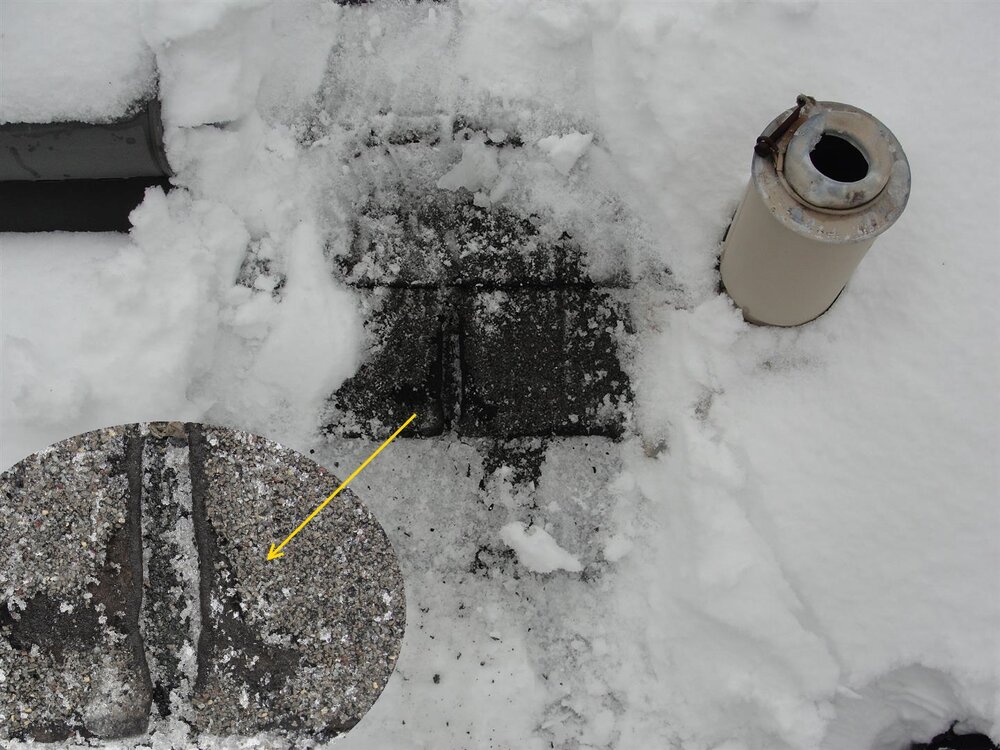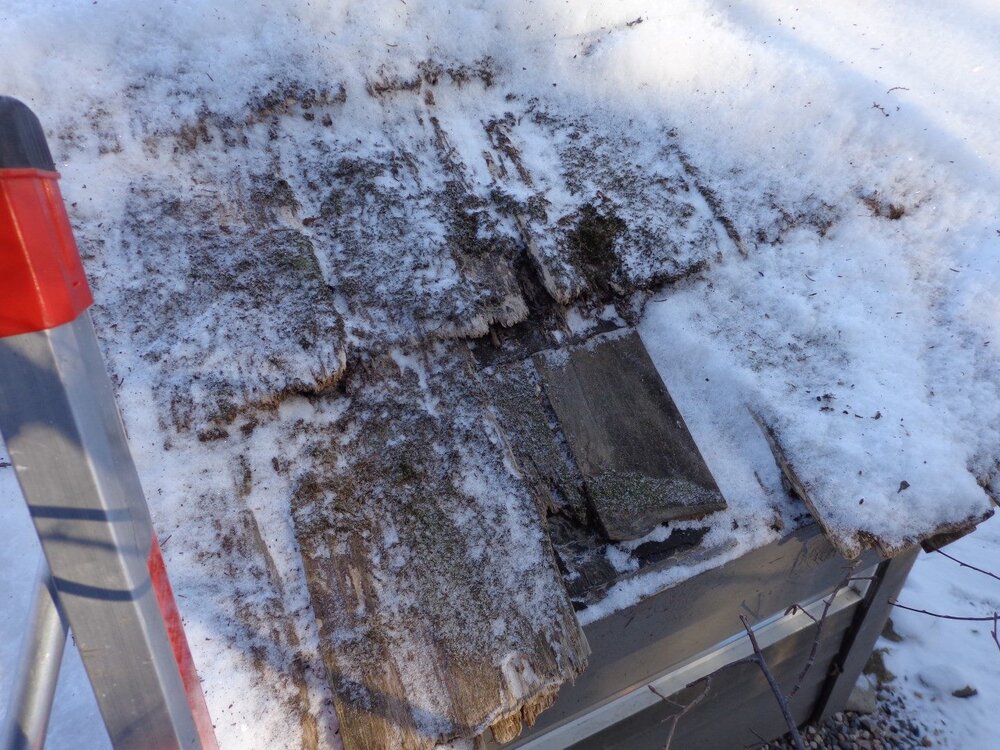This week’s question comes from every person buying a home in the dead of winter in Minnesota: “How do you inspect a snow-covered roof?”
The short and bitter answer? We can’t inspect it. Defects with roofs can be subtle, barely noticeable. Even a small amount of snow can be enough to hide problems with roofs that would otherwise be identified by a competent home inspector. For this reason, no home inspector on the planet will be able to properly inspect your roof when it’s covered with snow. But that doesn’t mean we do nothing.
Here at Structure Tech, our policy for snow-covered roofs is to lean a ladder up against the roof in multiple locations, brush some snow away, and see what we can see. This is best done on the south-facing sides of the roof because those are the areas exposed to the most sun, and therefore they’re the areas that fail first.
While this inspection method will only give us a snowy view of a small fraction of the roof, I’ve personally discovered numerous roofs that were in terrible shape with this method. Had I not taken the time to do this, I wouldn’t have identified anything at all.


Can we broom the snow off? No.
About once a year, we’ll have someone ask us if we can bring a broom to our inspection to broom the snow off the roof so we can inspect it. I won’t say this would be impossible, but it’s not that simple, either. If the goal is to give us the ability to inspect the entire roof, we’d need to get all of the snow off. And I mean all of it, not just most of it like I show in the photos above.
To get all of the snow off, we’d likely need to spend a couple of hours shoveling under rope and harness, then broom the snow off, and then we’d need to figure out a way to get the remaining snow off. A backpack leafblower might work, or possibly a blowtorch, but that’s getting way outside the realm of what we do as home inspectors.
I’ve had a few clients bring their own push broom to the inspection so they could try clearing off some snow themselves, and my conclusion has always been that pushing aside some snow with my glove to spot-check a tiny area for major damage achieves pretty much the same thing.
Increased liability? No.
I’ve heard countless home inspectors say that making any attempt to inspect a snow-covered roof increases their liability, giving a false impression that they’ve inspected the roof when they really couldn’t. To them, I say “communicate better”. Explain the limitations of this inspection method, and make it clear to your client that you couldn’t see most of the roof. Quit worrying about protecting your own butt, and worry more about protecting your client’s butt.
Discounts? No.
While walking a roof in the summer is usually a straightforward, clean job, I can’t say the same for multiple ladder settings in the winter. It’s a pain in the butt to lug a ladder through a snow-covered yard and set it up in multiple locations to do spot-checks on the roof. I’m usually sweating through my jacket by the time I’m done doing that in the dead of winter, yet my fingertips are still cold. When our clients ask us for a discount because we can’t walk the roof during the winter, we smile and politely say no. And we think to ourselves “we really ought to be charging extra for this…”
So what’s a buyer to do?
I’ve discussed the ins and outs of what a home inspector can do with a snow-covered roof, so the next logical question is “What should I do?” To help answer this question, we invited a veteran real estate agent onto our podcast, Michael Bartus, to discuss what he does for his clients who buy homes with snow-covered roofs. Check it out here:
Michael’s advice to real estate agents is to do some homework. Ask the seller for documentation about the age of the roof, such as receipts and lien waivers. Also, research the permit history of the home. Were permits even pulled when the roof was replaced? While the age of a roof alone will not determine its condition, roofs over 15 years old are of special concern because of insurance problems.
Unfortunately, there is no perfect answer. Michael says that if you buy a home with a snow-covered roof, you take on some risk. You’ll have to accept the risk and have a contingency plan if the spring thaw reveals a roof needing replacement. If you can’t tolerate that level of risk, your best option is to wait until spring to purchase a home.
